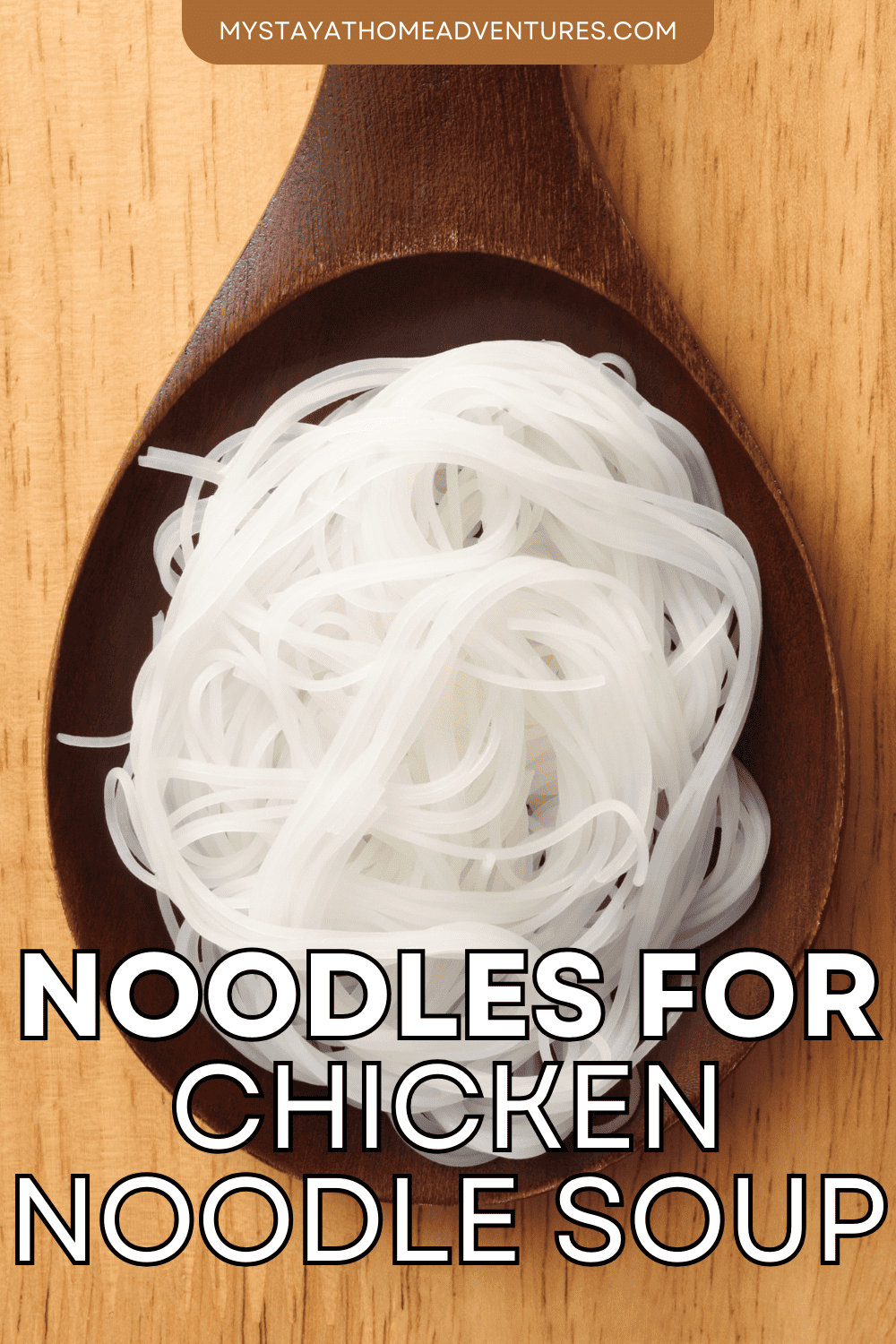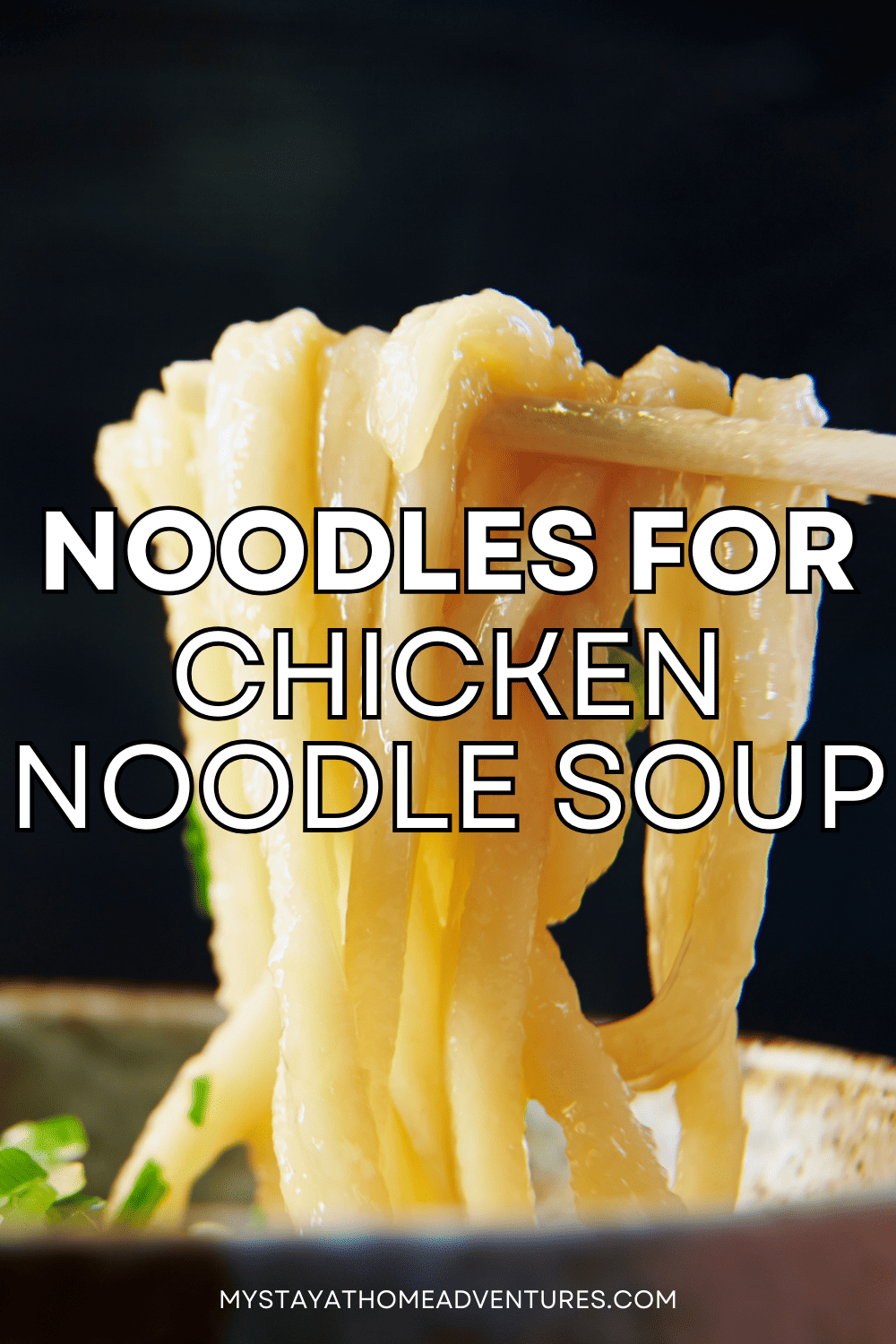What Type of Noodles for Chicken Noodle Soup
This post may contain affiliate links which might earn us money. Please read my Disclosure and Privacy policies hereIt’s time to celebrate the ultimate comfort food: Chicken Noodle Soup! And what makes this classic dish even more delightful? The noodles!
Let’s dive deep into the world of noodles for chicken noodle soup, exploring different types, cooking techniques, and creative variations. We know that a great bowl of Chicken Noodle Soup starts with the perfect noodles – whether it's thin and delicate egg noodles, hearty fettuccine, or chewy rice noodles.
You might enjoy these posts:
Join us as we uncover the secrets to achieving a bowl of Chicken Noodle Soup that is both comforting and satisfying. Get ready to slurp your way through our delicious recipes and discover the endless possibilities that noodles bring to this timeless favorite.
So, grab your spoon, and let's get noodles!
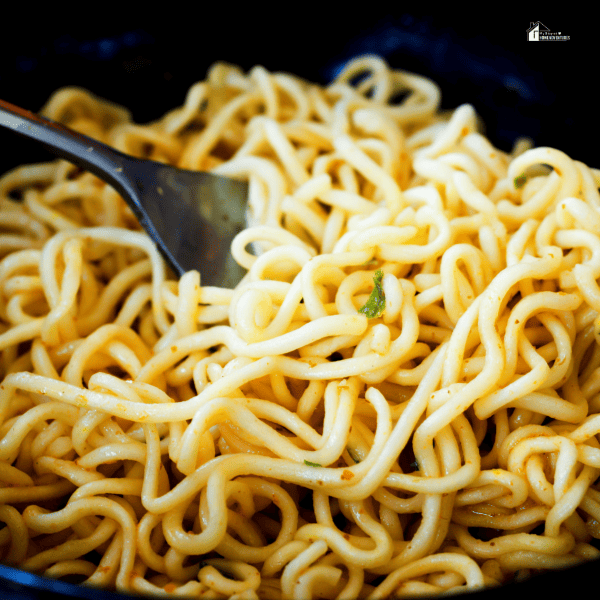
What pasta to use in soup?
The ideal pasta should be able to hold up well in the broth without becoming soggy or falling apart. Small shapes like shells, elbows, or ditalini are popular options as they can easily capture the flavors of the soup. Alternatively, long and thin noodles like vermicelli or thin spaghetti work well in brothy soups.
The choice ultimately depends on personal preference and the type of soup being made. Experiment with different pasta shapes to find the one that adds the perfect texture and enjoyment to your soup.
When making chicken noodle soup, when should you add the noodles?
When making chicken noodle soup, it is generally recommended to add the noodles towards the end of the cooking process. This ensures that the noodles do not become overcooked, mushy, or overly absorbed with the broth.
Here's a general guideline on when to add the noodles:
- Begin by cooking your chicken and vegetables in the broth until they are tender.
- Once the chicken and vegetables are cooked through, you can proceed to add your seasonings and spices to enhance the flavor of the broth.
- At this point, you can bring the broth to a gentle boil.
- Add the noodles to the boiling broth and let them cook according to the package instructions. Different types of noodles have different cooking times, so be sure to check the package for guidance.
- Cook the noodles until they are al dente, which means they are still firm to the bite but cooked through.
- Once the noodles are done, you can remove the pot from the heat and serve the soup immediately.
What kind of pasta do you use for chicken noodle soup?
When it comes to making a comforting bowl of chicken noodle soup, choosing the right pasta is key. The pasta you choose can greatly impact the overall texture and flavor of the soup.
Here is a list of pasta options that work well in chicken noodle soup:
Egg Noodles
Egg noodles are a classic choice for chicken noodle soup. These thin, ribbon-like noodles have a tender texture and a slightly rich flavor. They cook quickly and absorb the flavors of the broth, making each bite comforting and delicious.
Wide Egg Noodles
If you prefer a heartier noodle, wide egg noodles are a great option. These broad and flat noodles add a substantial bite to the soup. They hold up well in the broth and provide a satisfying chewiness.
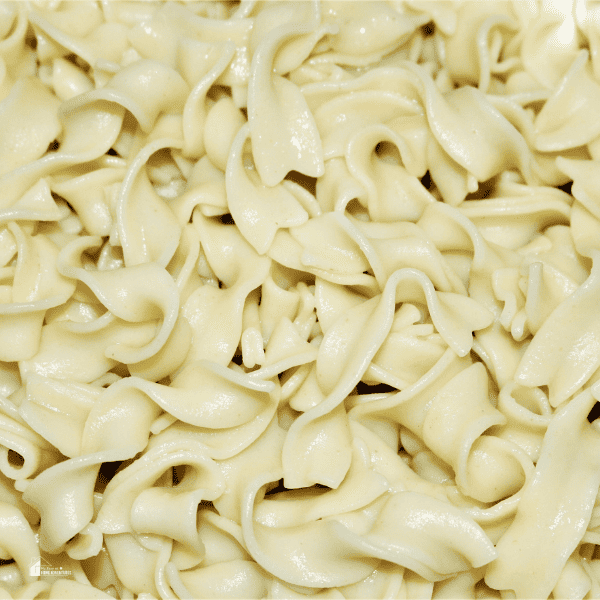
Rotini
Rotini is a spiral-shaped pasta that works well in chicken noodle soup. Its spiral shape allows it to hold onto bits of chicken, vegetables, and herbs, ensuring every spoonful is packed with flavor. The slightly ridged surface of rotini also helps to capture the broth, making each bite more flavorful and enjoyable.
Fusilli
Fusilli is a corkscrew-shaped pasta that adds a playful element to chicken noodle soup. Its unique shape allows it to hold onto the broth and ingredients, creating a delightful eating experience. The twists and turns of fusilli also provide a satisfying texture.
Orzo
Although orzo is typically used in Mediterranean dishes, it can be a delightful addition to chicken noodle soup. Resembling large grains of rice, orzo adds a unique texture to the soup. It absorbs the flavors of the broth and complements the chicken and vegetables beautifully.
Ditalini
Ditalini are small, tube-shaped pasta that work well in chicken noodle soup. Their compact size allows them to hold onto the broth and other ingredients, ensuring each bite is flavorful. Ditalini adds a pleasant chewiness to the soup.
Fine Egg Noodles
For those who prefer a lighter noodle, fine egg noodles are an excellent choice. These thin strands of pasta cook quickly and have a delicate texture. They add a subtle touch to the soup without overwhelming the flavors of the broth and chicken.
Udon Noodles
Udon noodles are thick, chewy Japanese wheat noodles that can add a unique twist to your chicken noodle soup. They have a hearty texture and absorb flavors well, making them a great choice for soups with bolder flavors.
Rice Noodles
Rice noodles, commonly used in Asian cuisine, can also be a fantastic addition to chicken noodle soup. These thin and delicate noodles cook quickly and have a light, subtle flavor. They add a touch of elegance to the soup and pair well with the tender chicken and fragrant broth.
Vermicelli
Vermicelli, also known as angel hair pasta, is a very thin pasta that can bring a delicate touch to your chicken noodle soup. These fine strands of pasta cook rapidly and provide a light and airy texture to the soup. They are perfect for those who enjoy a lighter noodle presence in their soup.
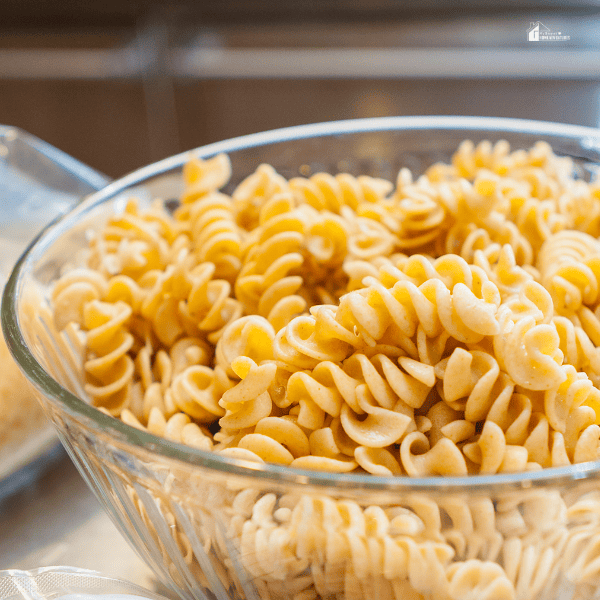
What pasta is usually cooked in broth?
When it comes to pasta that is commonly cooked in broth, there are several varieties to consider. Here is a list of some popular choices:
- Orzo: Orzo is a small, rice-shaped pasta that works well in broth-based soups. Its compact shape allows it to absorb flavors from the broth while maintaining a slightly firm texture.
- Small Shells: Small shell-shaped pasta, like conchiglie or ditalini, are often used in soups. Their concave shape helps them catch and hold onto the broth, resulting in every bite being flavorful.
- Ditalini: Ditalini are short, tube-shaped noodles that resemble little thimbles. They are commonly used in soups like pasta e fagioli, adding a delightful texture to the dish.
- Egg Noodles: Egg noodles are another popular choice for cooking in broth. These tender noodles quickly absorb flavors and can be found in dishes like chicken noodle soup or beef stew.
Can you use pasta noodles in soup?
Pasta noodles can be used in soup and are a popular addition to many soup recipes. Pasta noodles add texture and substance to the soup, making it more filling and enjoyable. They absorb the flavors of the broth, enhancing the overall taste of the dish.
When using pasta noodles in soup, it's important to consider the cooking time of the noodles. Adding them too early can result in overcooked and mushy noodles, while adding them too late may leave them undercooked. It's best to follow the instructions on the pasta package for cooking times and adjust accordingly based on the type of soup and desired level of noodle tenderness.
Whether it's small shapes like shells or elbows, or long and thin noodles like vermicelli or spaghetti, pasta noodles can be a delicious addition to any soup.
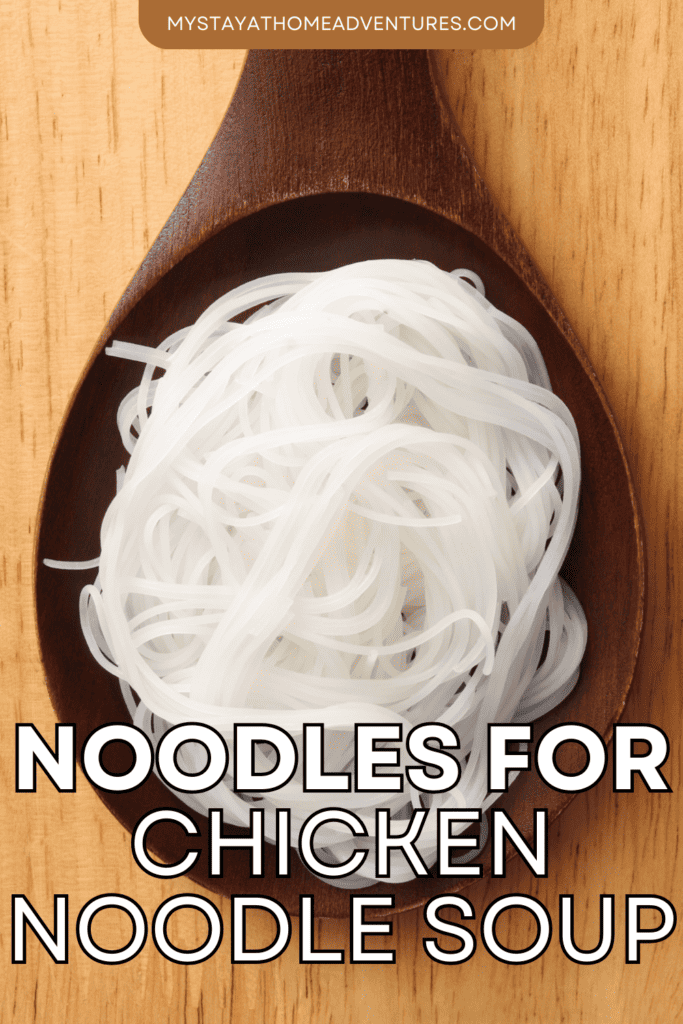
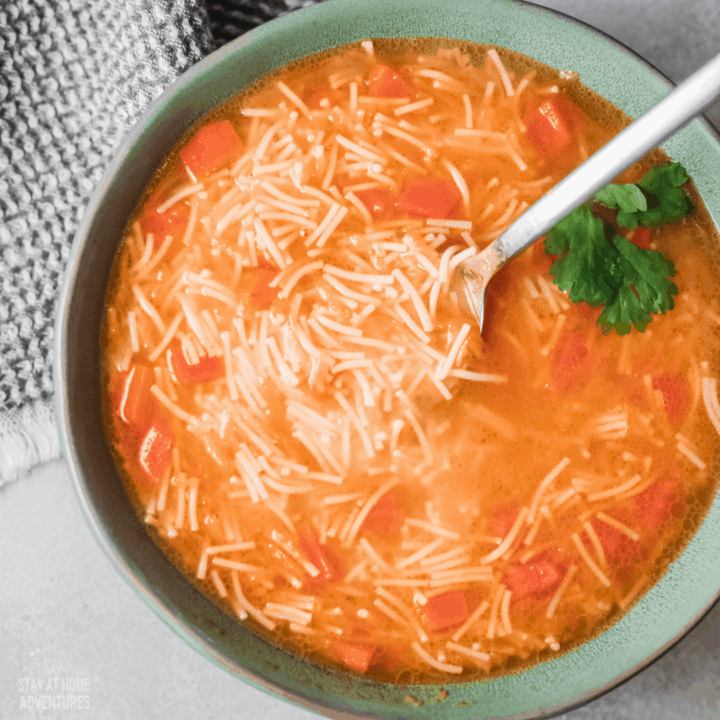
Sopa de Fideo Recipe
Sopas de fideo or Noodle soup is a favorite soup made with noodles and broth that is very popular in Latin America and the Caribbean, and even the Philippines.
Ingredients
- 3 Tbsps olive oil
- 1 Package angel hair pasta
- 1 Can crushed tomatoes
- 1 Onion, chopped
- 2 Garlic cloves, minced
- 4 cups chicken stock
Instructions
Heat the olive oil in a pot over medium heat. Add the angel hair pasta and fry until lightly golden brown. Add the crushed tomatoes, onion, and garlic clove and stir to incorporate. Simmer for 5 minutes.
Pour the water and stir to combine. Bring to a boil and cook for 8 minutes.
Recommended Products
As an Amazon Associate and member of other affiliate programs, I earn from qualifying purchases.
Nutrition Information:
Yield: 4 Serving Size: 1Amount Per Serving: Calories: 251Total Fat: 13gSaturated Fat: 2gTrans Fat: 0gUnsaturated Fat: 11gCholesterol: 7mgSodium: 402mgCarbohydrates: 24gFiber: 1gSugar: 7gProtein: 9g
These nutritional calculations might not be accurate. Please speak with a licensed nutritionist to assist you.

